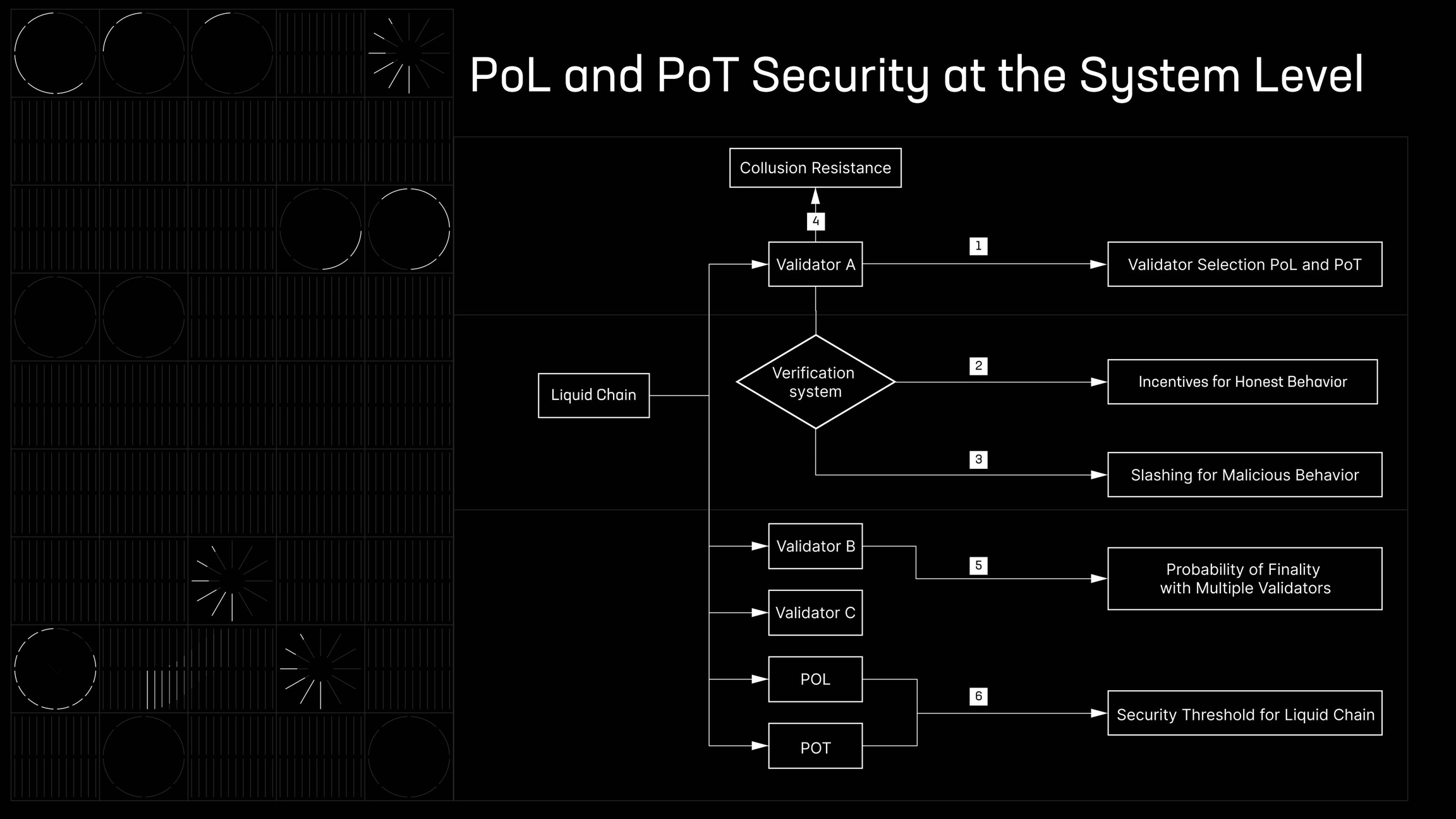PoL and PoT Security at the System Level
The Proof of Liquidity (PoL) and Proof of Transfer (PoT) mechanisms work together to secure Axis Chain by ensuring that validators are both financially committed and judged based on their performance. This section will use mathematical models to demonstrate how these mechanisms ensure security at the system level, using key concepts such as probability, incentive compatibility, and collusion resistance.
Key Variables and Definitions
The key variables used in the model are defined as follows:

1. Validator Selection in PoL and PoT
Validators are selected to validate blocks based on a combination of their liquidity stake (PoL) and performance score (PoT). The overall weight of validator , which determines their probability of being selected, is a function of both their liquidity and their performance :
The probability that validator is selected to validate a block is proportional to their weight relative to the total weight of all validators:
Substituting for :
2. Incentives for Honest Behavior
Validators are financially incentivized to behave honestly because they earn rewards proportional to their probability of being selected. The expected reward for validator per block is given by:
Substituting the expression for :
Thus, the higher the validator’s liquidity and performance score , the greater their expected reward . This incentivizes validators to stake more liquidity and maintain high performance in block validations.
3. Slashing for Malicious Behavior
To deter validators from acting maliciously (e.g., proposing invalid blocks or double-signing), Axis Chain implements slashing penalties. The amount of liquidity slashed from a validator is proportional to their staked liquidity:
Where is the slashing rate, a fraction of the total staked liquidity.
The expected utility for a validator considering malicious behavior can be modeled as:
Substituting the expressions for and :
For a validator to act honestly, the expected reward from validating blocks must exceed the expected penalty from being slashed:
This inequality shows that a validator will behave honestly as long as the rewards from validation exceed the slashing penalty.
4. Collusion Resistance
To analyze the security against collusion, consider a subset of validators that colludes and controls a fraction of the total liquidity:
For the colluding group to successfully compromise the network, they would need to control more than 50% of the total validation power. This means they need:
However, even if a group controls a large amount of liquidity, the PoT score of the colluding validators plays a critical role. Validators with lower performance scores are less likely to be selected, even if they control a large amount of liquidity. Thus, the effective power of the colluding group is reduced by their average performance:
Where is the number of colluding validators, and is the performance score of each validator. As long as the average performance of the colluding validators is lower than that of honest validators, the effective power will remain below 50%, making it difficult for the colluding group to compromise the network.
5. Probability of Finality with Multiple Validators
Finality in Axis Chain is achieved when a block is validated by a supermajority of validators. Let be the minimum number of validators required to finalize a block, where .
The probability that a block is finalized by at least honest validators, given that each validator has a probability of behaving honestly, is:
Where:
is the probability that a validator behaves honestly.
is the combination formula for selecting honest validators out of .
As the number of honest validators increases, the probability approaches 1, ensuring that the system achieves fast and secure finality.
6. Security Threshold for Axis Chain
The total security of the PoL and PoT system is represented by the sum of all staked liquidity and performance scores across the network. Let represent the total security weight of the network:
The network remains secure as long as the effective security weight of honest validators exceeds that of any colluding group. The system’s security threshold is achieved when:
This ensures that the network can resist attacks as long as the majority of the validation power (as measured by liquidity and performance) remains in the hands of honest validators.
Last updated